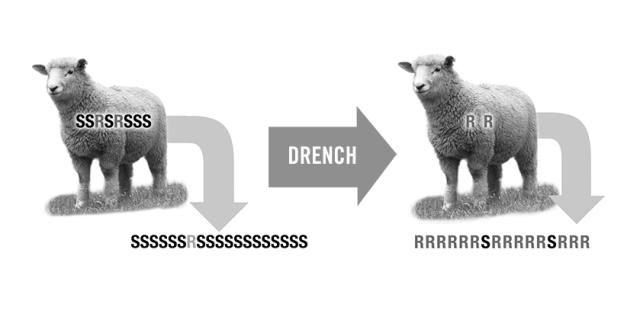The term ‘Refugia’ can be really confusing! The outcome we want is to stop your farm from becoming dominated by drench-resistant worms. Using Refugia means leaving some worms free to breed without ‘screening’ by drench. There are various ways to achieve this.

What is Refugia?
The term Refugia means a worm population that can reproduce without being exposed to drenching.
Keeping a population (or refuge) of drench-susceptible worms on the farm can slow the build-up of parasites resistant (R) to drenches.
Without some worms in Refugia, drench-resistant (R) worms carry on breeding, while their susceptible (S) mates are killed. Resistant parent worms pass on their resistant genes to their offspring, who are also resistant.
This means resistant worms make up an increasing proportion of the worm population on the farm. Over time, they become dominant in the population and eventually, drenches fail to work.
Because we still want our drenches to be effective for the stock that need them most, refugia is an important piece of any worm management plan.
Ideas for creating Refugia
- Maintain an undrenched ewe flock that shares grazing areas with drenched lambs.
- Leave a proportion of older lambs/hoggets/calves undrenched at each treatment episode, also called TST (targeted selective treatment).
- Extending drench intervals. A longer period between drenches allows more time for susceptible worms to produce offspring and dilute out the offspring of resistant worms. Monitoring is important to do this safely.
- Don’t drench animals directly onto areas of new grass or ‘clean’ grazing. See this video on new grass management for tips.
- Draft out light 2ths or ewes, don’t drench them and run them together with lambs.
- Avoid running lambs or R1 cattle as the sole stock class in a grazing area.
